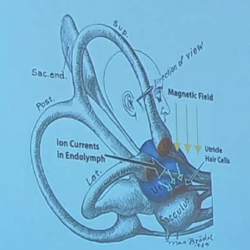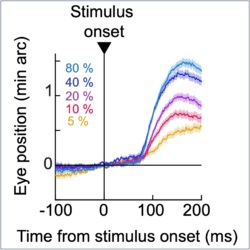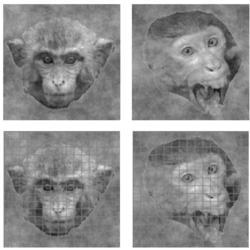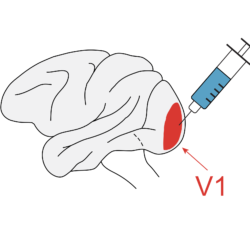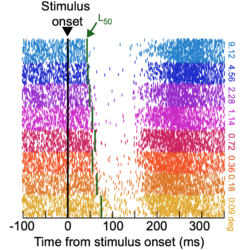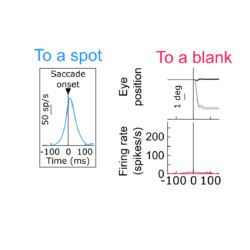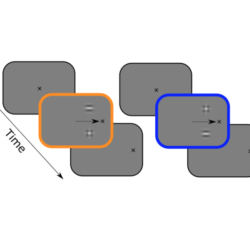Our research
Role and genesis of fixational eye movements
Microsaccades are extremely small versions of the saccadic eye movements that we employ in everyday life, but they never displace retinal images of the objects we are looking at away from the fovea. Slow ocular drifts are even smaller smooth rotations of the eyeball during fixation. We use a variety of techniques to explore brain control over microsaccades and slow ocular drifts, as well as to understand when/why these movements are triggered.
Perception and eye movements
High-resolution vision in humans is only limited to a small area of the visual field. Despite this, humans have the perception of a vivid, clear scene throughout the visual field, and this is because humans are active observers. One of our goals is to understand how eye movements support such clear, stable percepts.
visual attention and eye movements
Related to the interplay between perception and eye movements is an equally important interaction between attention/decision making/target selection on the one hand and eye movements on the other. Our lab investigates the neural mechanisms that underlie such interaction.
SELECTED PUBLICATIONS
Willeke, K. F.*, Tian, X.*, Buonocore, A.*, Bellet, J., Ramirez-Cardenas, A. & Hafed, Z. M. (2019). Memory-guided microsaccades. Nature Communications, 10: 3710, doi: 10.1038/s41467-019-11711-x. Chen, C. -Y., Hoffmann, K.-P., Distler, C., & Hafed, Z. M. (2019). The foveal visual representation of the primate superior colliculus. Current Biology, 29: 2109-2119, doi: 10.1016/j.cub.2019.05.040. Chen, C. -Y., Sonnenberg, L., Weller, S., Witschel, T., & Hafed, Z. M. (2018). Spatial frequency sensitivity in macaque midbrain. Nature Communications, 9: 2852, doi: 10.1038/s41467-018-05302-5. Hafed, Z. M. & Chen, C. -Y. (2016). Sharper, stronger, faster upper visual field representation in primate superior colliculus. Current Biology, Vol. 26, pp. 1647-1658. Hafed, Z. M., Chen, C. -Y., & Tian, X. (2015). Vision, perception, and attention through the lens of microsaccades: mechanisms and implications. Frontiers in Systems Neuroscience (Special Research Topic on Perisaccadic Vision), 9:167. doi: 10.3389/fnsys.2015.00167 Chen, C. -Y., Ignashchenkova, A., Thier, P., & Hafed, Z. M. (2015). Neuronal response gain enhancement prior to microsaccades. Current Biology, Vol. 25, pp. 2065-2074. Hafed, Z. M. (2013). Alteration of visual perception prior to microsaccades. Neuron, Vol. 77, pp. 775-786. Hafed, Z. M., Goffart, L., & Krauzlis, R. J. (2009). A neural mechanism for microsaccade generation in the primate superior colliculus. Science, Vol. 323, No. 5916, pp. 940-943. Hafed, Z. M. & Krauzlis, R. J. (2006). Ongoing eye movements constrain visual perception. Nature Neuroscience, Vol. 9, No. 11, pp. 1449-1457. Hafed, Z. M. & Clark, J. J. (2002). Microsaccades as an overt measure of covert attention shifts. Vision Research, Vol. 42, No. 22, pp. 2533-2545.





